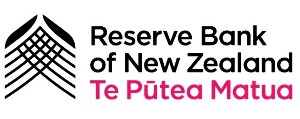
Any fear inflation at 2.7% for the year might convince the RBNZ to keep its finger on the pause button should have been shattered by the news CPI prices rose “just” 0.5% in the June quarter, Stephen Toplis, BNZ research head says.
In its July Monetary Policy Review, the RBNZ acknowledged inflationary pressures had risen but that that such pressure would likely be temporary.
Consequently, the green light was given to an August rate cut.
Toplis says with those inflationary risks failing to eventuate that green light is now burning even more brightly.
“Importantly, it now looks a little less likely that annual inflation will push through 3%, and a lot less likely that it might stay there.”
He says the most interesting aspect of yesterday’s CPI figures is the downward pressure on prices which are related to weakness in the residential property sector.
Central to this is the fact the cost of home ownership (otherwise known as building costs) fell 0.1% in the quarter to be up just 0.8% for the year.
“The last time annual building cost inflation was this low was in the depths of the GFC and, before that, the 1998/1999 recession.”
Weak building costs also flowed through to property maintenance which experienced 1.4% annual inflation.
Toplis says it should be no surprise there is also annual deflation for furniture, furnishings and floor coverings, textiles and household appliances.
‘Softening in the housing market will also be playing its part in seeing insurance inflation subsiding to an annual 6% from a peak of 14% a year earlier. The quarterly increase of just 0.7% suggests the annual rate will drop much further yet,” he says.
Rental inflation is also in decline with prices up 0.8% for the quarter, 3.2% for the year.
BNZ economists were surprised rents rose as much as they did, given Stats NZ’s monthly indicator suggests a lower movement. But the trend is still down, and anecdotal evidence implies it will remain firmly so for a few more quarters yet.
In contrast, the worrying aspect of inflation is that the cost of essentials, such as food, accommodation, electricity, gas and petrol, is rising at about twice the pace of the remainder of the CPI, Toplis says.
“For us, by far and away the biggest concern is that food price inflation has accelerated to an annual 4.2% following a 1.6% quarterly increase.
“As if this wasn’t bad enough, and just in time for winter, household energy costs rose 4.7% in the quarter to be up 9.1% on year earlier levels. And there’s more to come.
”To cap things off, rates rose an annual 11.9% and you can look forward to an, on average, rates increase of about 8% in the current quarter.”
He says the reason for mentioning this is not only to highlight the plight of a large proportion of the population but to also show the significant headwinds to any chance of an acceleration in growth in New Zealand.
“If GDP is to pick up meaningfully then household consumption has to rise. With effective real disposable incomes under so much pressure there is little chance of an increase in real spending.”
The bank’s “flash” forecast is for prices to rise 0.8% in this quarter taking annual inflation to 2.9%.




Comments
No comments yet.
Sign In to add your comment